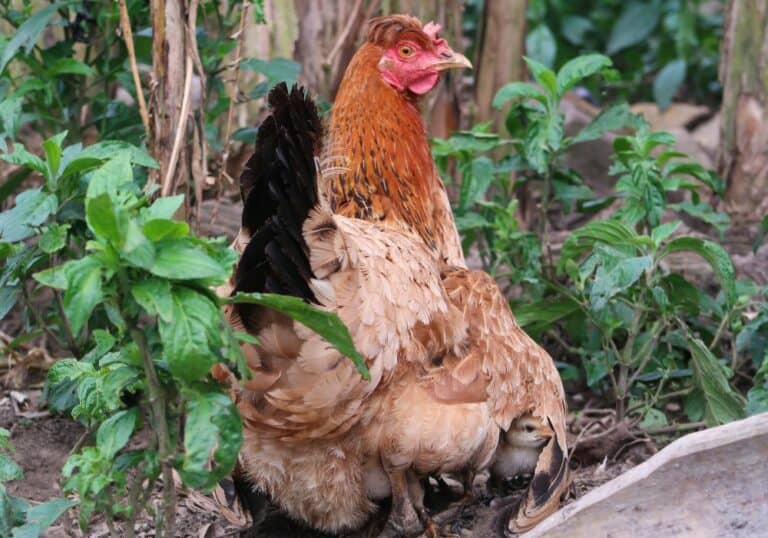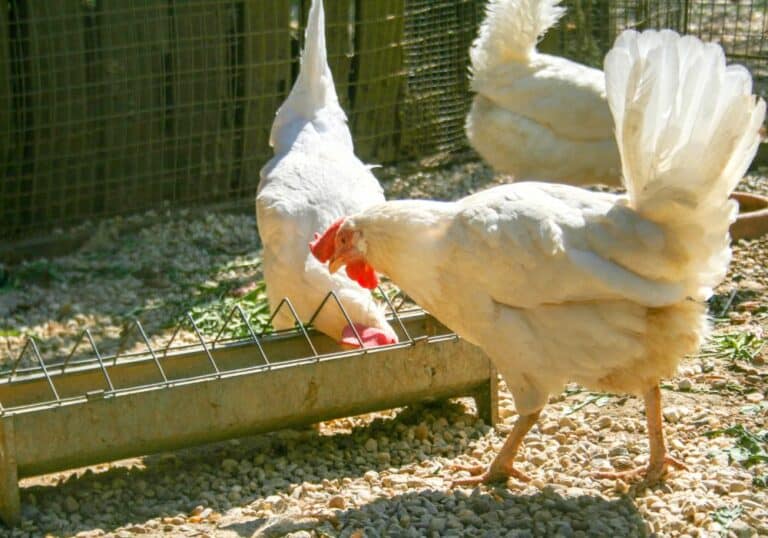One of the more common diseases that chickens acquire is Marek’s Disease. It is considered a viral herpes disease that cannot be acquired by humans. However, once a chicken catches it, it will be infected for life.
Depending on the strain of the disease and the breed of chicken, not all birds will display signs of the sickness. But despite that, it is crucial to understand that once your chicken gets infected, you’re at risk of losing a huge percentage of your flock.
To avoid this, we will discuss everything you need to know about Marek’s Disease including its causes, symptoms, and treatments. Read on to find out more.
What is Marek’s Disease?

Marek’s Disease (also known as MD or fowl paralysis) is a common issue among chickens. It is caused by the herpes virus that affects both backyard and commercial poultry.
When a chicken gets infected, it may result in death or great production loss. Moreover, it causes changes in the chicken’s nerves, and may also lead to tumors in major internal organs.
Chickens are mainly the target of this disease since it rarely infects other types of bird species. Despite this, it is still one of the most widely spread poultry problems, globally.
The first report of this disease was by Jozef Marek in 1907. Since its discovery, the disease was found to affect poultry worldwide, thus, became a major problem for everyone who dealt with chicken production.
This contagious and viral disease is caused by the Alphaherpesvirinae virus, which has the ability to infect the body and survive. Regardless of how healthy the chicken is, its immune system will not be able to destroy the disease. The reason is it attacks specific white blood cells, causing some of these to become cancerous.
The cancerous cells will then start infecting internal orders like the liver, kidneys, etc. Plus, these also attack the skin, peripheral nerves, and muscles.
Marek’s Disease can affect chickens that are 3 to 4 weeks old, however, it mostly affects birds between 12 and 30 weeks old. Additionally, the female chickens are more affected than the males, and note that the disease can also attack quails and turkeys.
Different Types of Marek’s Disease
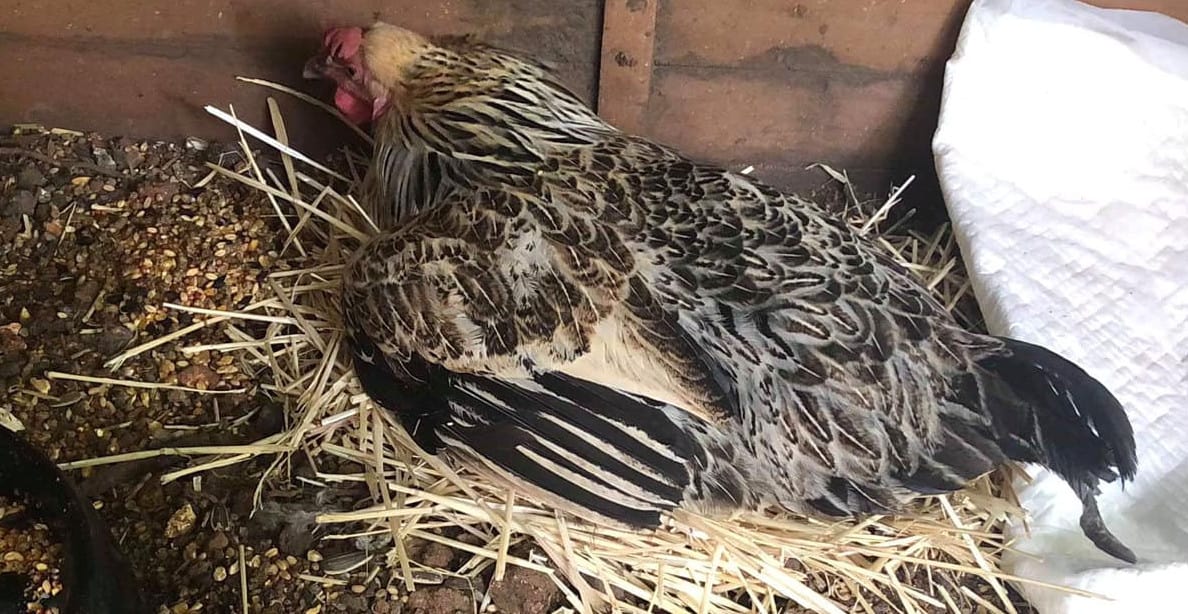
It is important to mention that Marek’s disease can manifest in four different forms: neurological, visceral, cutaneous, and ocular, each displaying distinct signs. However, the signs may vary between birds, with some showing all symptoms while others showing fewer.
- Ocular Form – This form usually leads to blindness, and in addition, the chicken’s pupils do not respond correctly to light. Their irises can turn gray, so this type of Marek’s Disease is often referred to as gray eye.
- Cutaneous Form – Chickens infected with this form of the disease experience enlarged feather follicles, usually called skin leucosis. It reddens and may become brownish and may eventually scab over.
- Nervous or Neurological Form – This form of Marek’s Disease is characterized by nerves that are enlarged. As it worsens, it will eventually lead to discoordination, paralysis, and breathing difficulties.
This is the most common form of the disease and starts as a progressive paralysis of the neck/wings and limbs. It affects the sciatic nerves of the chicken, leaving it uncoordinated on its feet. From there, paralysis takes over very quickly and will cause blindness in the chicken.
The symptoms of this form of Marek are mainly due to lesions that affect the nervous system. From there, a few other issues usually follow. Usually, the affected chicken will experience temporary paralysis, but it will resolve spontaneously and on its own.
- Visceral Form – Tumors may appear in your chicken’s internal organs such as the ovaries, spleen, liver, and heart. It would eventually lead to various symptoms such as depression, paralysis, weight loss, anemia (pale combs), and occasionally diarrhea. Then, the disease may progress silently, and your chicken may succumb to it suddenly without any warning.
How is Marek’s Disease Transmitted?
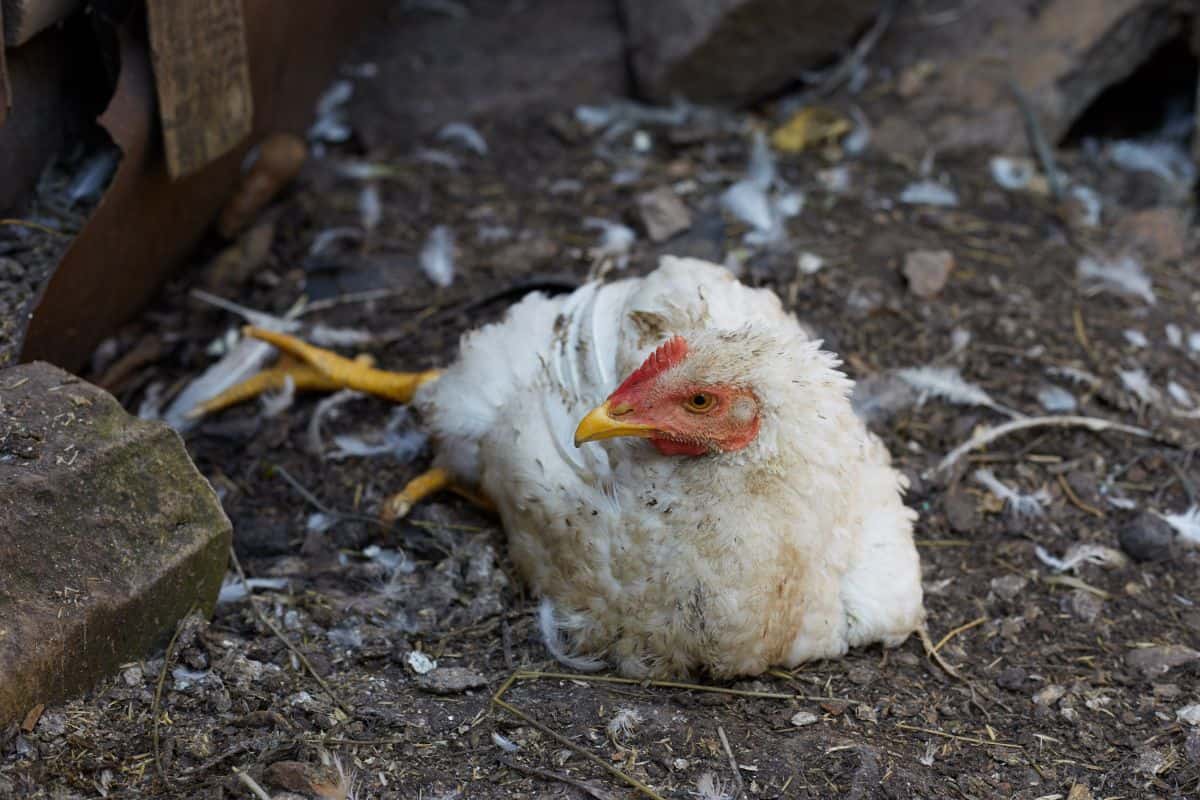
Marek’s Disease is highly contagious among chicken flocks and is prevalent in chicken-raising areas. The virus spreads rapidly among unvaccinated birds once it infiltrates a flock.
Inhaling dander from an infected bird is enough to transmit the strain. Unfortunately, the virus can persist in a contaminated coop even after the birds have left.
The disease can also be transmitted through the clothing or shoes of handlers moving between coops. This is why you need to identify the signs of infection early on to prevent it from spreading further.
It is worth noting that Marek’s Disease cannot be transmitted vertically from mother hen to chick through the egg. If a newly acquired chick/chicken is infected with Marek’s, it does not mean the parent is infected. Rather, the chick/chicken acquired the disease due to exposure after hatching.
Causes of Marek’s Disease in Chickens
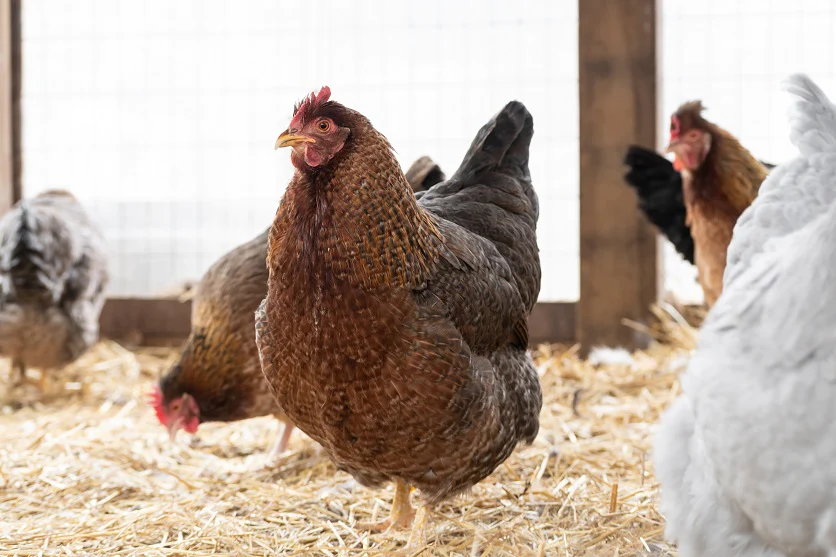
Birds contract the disease by inhaling dander containing the virus. While the purified form of the virus is easily destroyed, it can survive for extended periods of time in the dander. This renders the environment contaminated for several months to years, even after removing the chicken from the area.
Since infected chickens continue to spread the virus, introducing new unvaccinated ones into the infected flock can spread the disease to them. This is true for the young chicks that are highly vulnerable.
Even if new birds are separated from the affected flock, there is a risk of transmission. Caretakers who carry the disease on their hands, clothes, shoes, hair, and skin can cause it to spread.
It is important to note that hatching eggs does not transmit Marek’s Disease transmission. Even if the breeders carry the disease, the chicks that do not come into contact with the virus-laden dander will hatch free of Marek’s.
Symptoms of Marek’s Disease
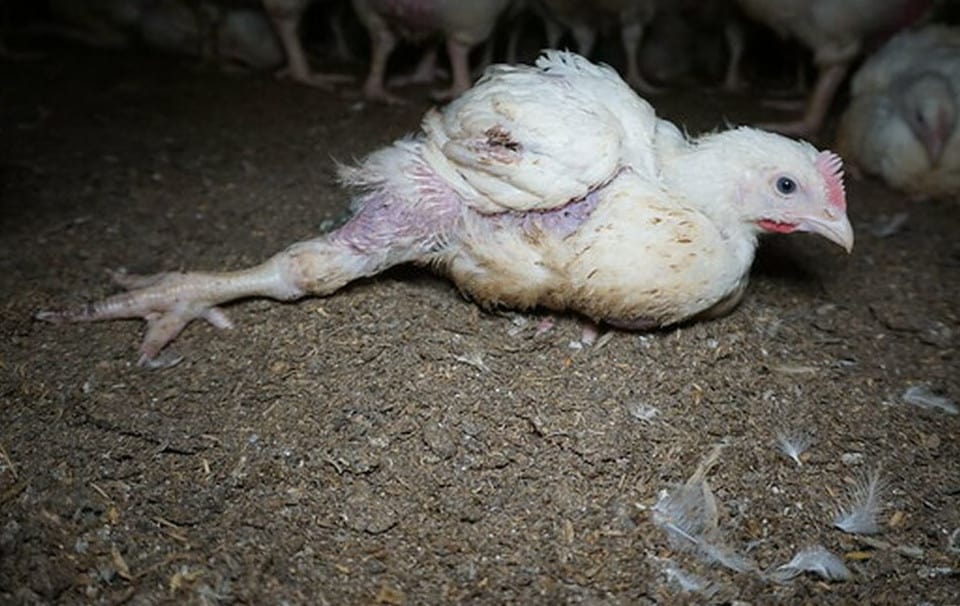
There are numerous clinical signs to observe that can indicate the issue with Marek’s Disease. Identifying the signs and symptoms of the disease in infected chickens can save the majority of your flock in the coop.
If detected immediately, there is a high chance that most of your chickens will remain uninfected. Here are a few symptoms that you should look out for:
- Blindness
- Change in eye color
- Delayed crop emptying
- Depression
- Drooping wings
- Enlarged crop
- Enlarged feather follicles, specifically on the legs
- Gasping
- Incoordination
- Inwardly-curved toes
- Irregularly-shaped or unequally-sized pupils
- Loss of appetite
- One leg stretched forward and the other back
- Paleness
- Paralysis
- Red, bloody-looking shanks
- Squatting position
- Torticollis (twisted/crooked neck)
- Nervous tics
- Weight loss
Marek’s Disease symptoms vary depending on the affected tissues. When it takes on the classic form, it can lead to inflammation and tumors in the nerves, spinal column, and brain. This will lead to leg/wing paralysis and head tremors in chickens.
It’s important to note that a chicken with Marek’s won’t have all of these symptoms and equally, these symptoms can also indicate something other than Marek’s. It’s crucial to separate any chicken displaying these symptoms. After you do, it is best to consult a veterinarian for advice.
Diagnosis

To diagnose Marek’s Disease, a veterinary examination is imperative. In most instances, the clinical symptoms, as well as post-mortem observations, will confirm the diagnosis and eliminate the possibility of other illnesses. During post-mortem examinations, the enlargement of nerves is a typical finding, along with changes in one or more internal organs.
How to Treat Marek’s Disease in Chickens
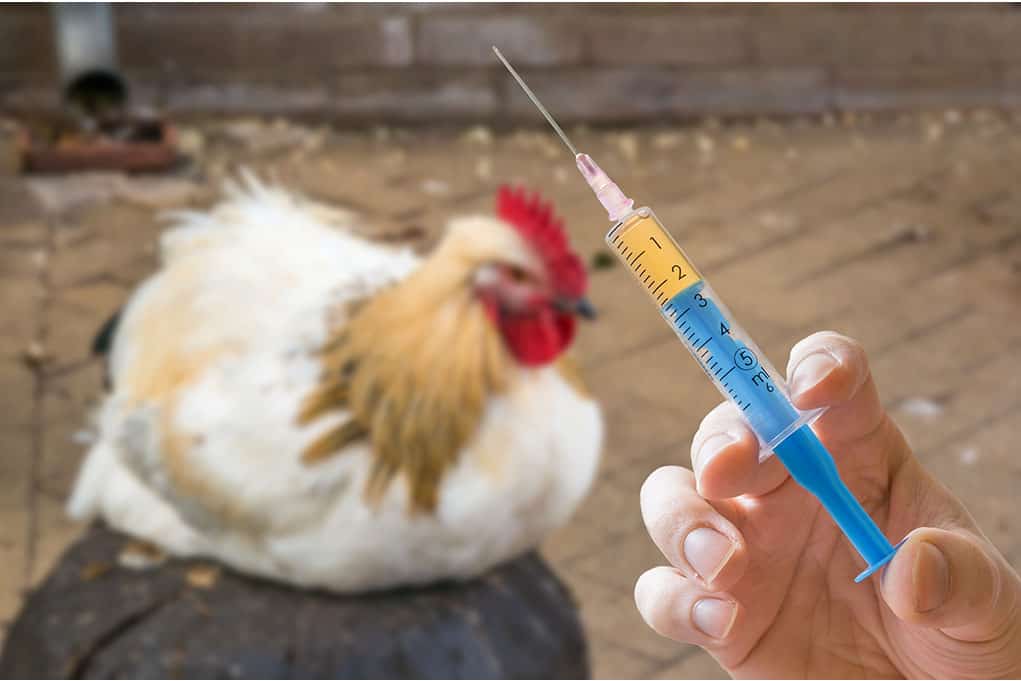
Marek’s disease has no cure or treatment, and vaccination is the only effective method for controlling it. By receiving the vaccine, chickens can develop a stronger immunity to the disease. This decreases the risk of severe symptoms or death and minimizes the spread of the disease during an outbreak.
To ensure effective vaccination, it is best to administer the vaccine when chicks hatch or while in the egg before hatching. It takes about two weeks for birds to build up immunity after vaccination. This is why it is crucial to protect them from the virus during this time.
If you plan to vaccinate the chicks yourself, consult with a veterinarian, and follow the vaccine label instructions for best results. Hatcheries that vaccinate chicks before shipment are a preferred option for acquiring vaccinated chicks.
Small flock owners can purchase vaccines, but these come in large quantities and require proper shipping and storage. The vaccine is given subcutaneously (under the skin) on the back of the neck. It should also be administered as soon as possible after hatching.
Vaccinating Chicks at Home

Although we mentioned that it’s best to buy chicks from a hatchery that can vaccinate them beforehand, you can also vaccinate them at home.
If you are going to do this, you will need to follow the exact instructions on the label. You must know what temperature to thaw the vaccine and how long you should thaw this. You will also need to use it within one to two hours after reconstitution.
Keep in mind that after two hours, you will need to throw the vaccine once it is reconstituted. You cannot store the vaccine for later use since it will no longer be effective.
Although the live virus that causes Marek’s Disease is tough in the feather dander, it dies quickly once the chickens are vaccinated. However, you will need to inject it properly under the chicken’s skin for it to work. This can be challenging with small chicks, so it is best to have at least two people vaccinate them. One can hold the chicks while the other injects the vaccine.
To get optimal vaccine protection, ensure that the brooder is clean and disinfected before placing the chicks. Also, keep all the debris and dander from older chickens away from the chicks for at least one week.
While vaccinating older chickens is possible, it will not be as effective as vaccinating at an early age. Older chickens have possibly been exposed to Marek’s Disease since it is one of the most common diseases among chickens.
How to Prevent Marek’s Disease
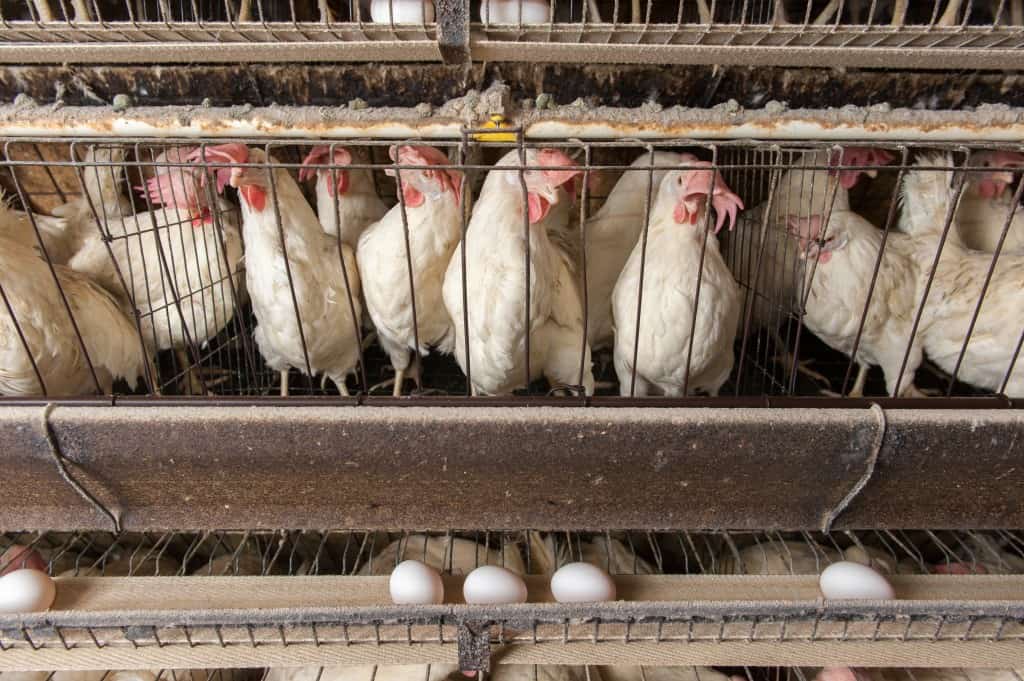
The best way to prevent Marek’s Disease from infecting your chickens is to stop the virus before it starts. Your chicks should be vaccinated as early as day one to make them resistant to the disease. They should also not be introduced to new chickens for a week while the vaccine is taking effect.
However, you must keep in mind that vaccines will only prevent chickens from experiencing symptoms and significantly reduce the spread of the disease.
Aside from vaccinating early, it’s also recommended to have good biosecurity in your coops. This means keeping the chickens’ area clean and avoiding adding new chickens to the flock.
Also, you will have to change clothes when going to different chicken locations and control the infestation of pests and rodents. Doing these will ensure that you are not carrying diseases between healthy and sick chickens.
Practicing food management will ensure that your chickens will not acquire Marek’s Disease. Consult your veterinarian on a regular basis for the annual care of the chickens in your backyard flock.
Myths about Marek’s Disease
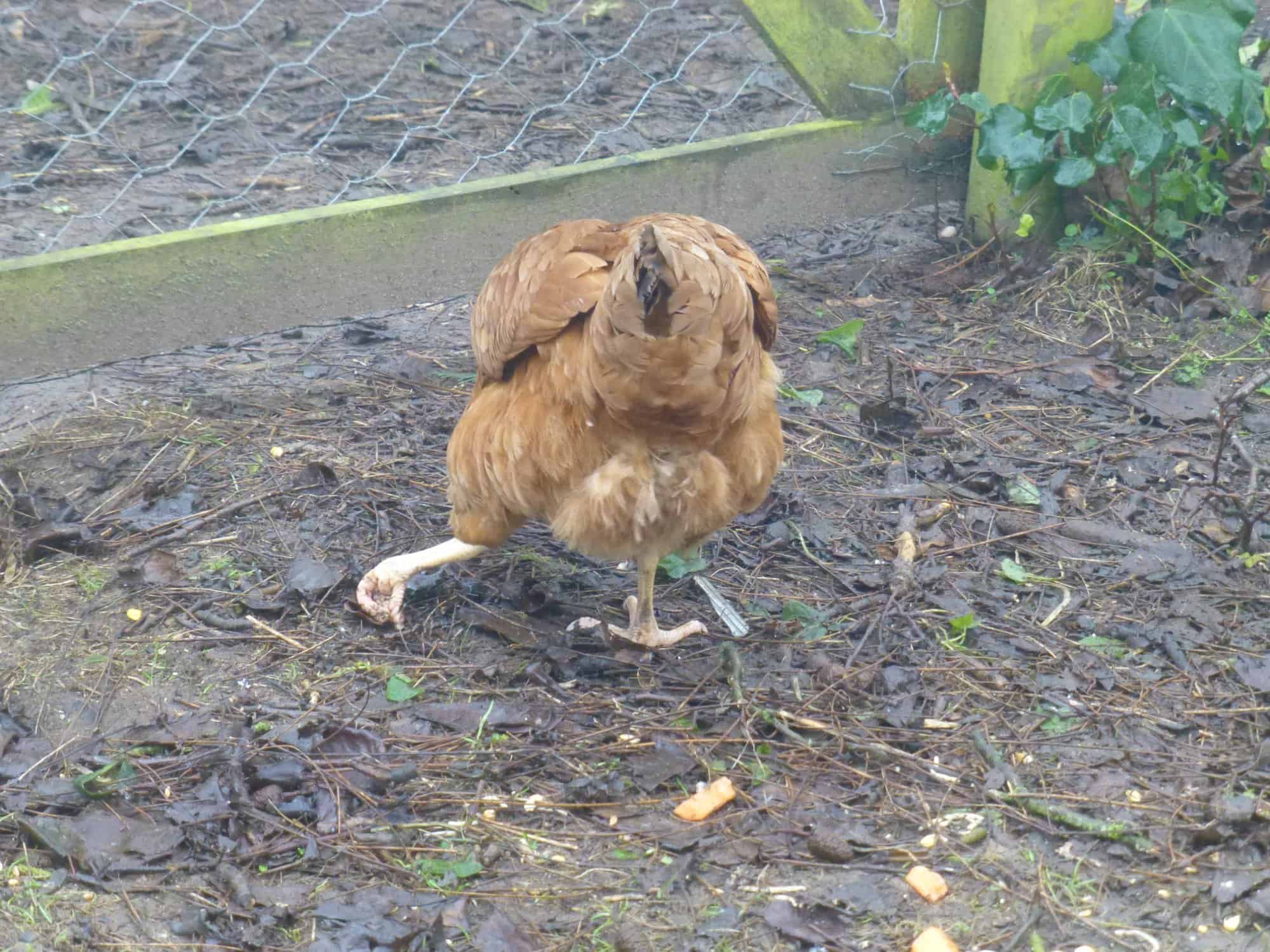
Sadly, many people can be misinformed about Marek’s disease, which can lead to delayed or incorrect treatment. Let’s have a look at what some of these misconceptions are.
- Vaccination Resistance – Some people believe that you should not vaccinate chickens to make the survivors resistant to Marek’s Disease. However, genetic disease resistance takes over 10 years to develop, and it has never been successful with chickens. If not vaccinating chickens was effective, commercial companies would have bred resistant chickens.
- Mixing with Turkeys – Another misperception is that you can mix turkeys with chicks to prevent Marek’s Disease. It is not true that exposing chickens naturally to turkey herpes will make them resistant. In fact, doing this will also expose the turkeys to other common chicken diseases like Blackhead and Mycoplasma.
- Vaccine Infection – Others advise not to vaccinate chickens due to the dangers that the vaccine may bring, like making the chickens ill. Of course, they can acquire a bacterial infection if you do not observe and follow proper sanitation while mixing the vaccine.
Always wash your hands and use a sterile needle when handling vaccines, and never touch the needle with your hands or any dirty object. Also, only use commercial vaccines since these are tested by companies.
- Vaccine Leak – The last misperception is vaccinating a few chickens to let the vaccine spread and protect the others. This is wrong and doesn’t work since each chicken needs to have a proper dose of vaccine before being exposed to the virus that causes Marek’s Disease. A full dose of the vaccine is the optimal way for chickens to acquire protection.
Conclusion
Marek’s disease is a horrible virus for any chicken owner to deal with. It’s important to take immediate steps to prevent the spread of the disease and if it’s not too late, vaccinate your chickens to protect them from future infections.


